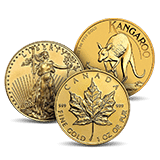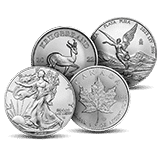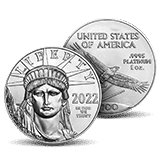
Dollar Cost Averaging (DCA) is a time-tested investment strategy designed to protect investors against unpredictable market prices. Rather than trying to perfectly time a single lump-sum investment, often akin to catching a falling knife or missing the boat altogether, DCA focuses on periodic, consistent investments, irrespective of current market conditions.
When applied to precious metals like silver, which have historically been subject to significant volatility due to myriad economic, geopolitical, and industrial factors, DCA can offer investors a disciplined and systematic approach.
This strategy not only eases the anxiety of entering the market but also capitalizes on the inherent fluctuations of silver prices, providing a more balanced and potentially lower average cost over time.
Benefits of Dollar Cost Averaging
It is essential to note that like all investment strategies, DCA has its potential downsides and does not guarantee a profit or protect against losses in declining markets. When applying this strategy to silver, the benefits include:
- Mitigating Timing Risk: Instead of trying to “time the market” and make a single large purchase when you believe silver is at its lowest price, DCA involves making regular purchases regardless of the current silver price. This reduces the risk of investing a large sum at an inopportune time.
- Smoothing out Price Volatility: Silver, like other commodities, can be quite volatile. By purchasing at regular intervals, you’re likely to buy at highs and lows, which averages out the cost over time.
- Simplified Decision Making: With DCA, you do not have to constantly watch the market and decide when to buy. You simply buy at predetermined intervals, which can reduce stress and decision fatigue.
- Affordability: Instead of saving up a large sum to invest all at once, DCA allows individuals to invest smaller amounts over time. This can make investing more accessible to those with limited funds.
- Encourages Regular Saving: DCA can serve as a discipline mechanism, encouraging investors to consistently set aside money for investment.
- Potential for Lower Average Cost: If the price of silver experiences a significant downturn after an investor makes a one-time lump-sum investment, the average cost of their investment will be higher than if they had used DCA. With DCA, during downtrends in the market, more units of silver are purchased, potentially resulting in a lower average cost over time.
- Reduced Emotional Investing: Investors often make decisions based on emotions, especially during market extremes. By sticking to a DCA strategy, you can help prevent impulsive decisions based on short-term price movements.
- Flexibility: You can adjust the amount and frequency of your contributions based on your financial situation. If money is tight one month, you can reduce your investment or skip it altogether.
- Broadened Exposure: By investing in silver over a period of time, you gain exposure to the metal across various economic cycles, geopolitical events, and market conditions.
Dollar Cost Averaging vs. Lump Sum Investing (LSI)
DCA could be more suitable if you are apprehensive about short-term market fluctuations or if investing a significant sum makes you uneasy.
On the other hand, if you are an investor with a long-term perspective, are not overly anxious by short-lived market shifts, and possess a lump sum ready to invest, LSI may promise better average returns overall.
However, one’s unique situation, objectives, and risk comfort often dictate the most fitting strategy. Seeking advice from a financial expert can be beneficial in making a decision that aligns with your requirements.
Does DCA Work in a Flat Silver Market?
Even when the market is stagnant, DCA encourages consistent investing, a habit that can be instrumental in accumulating wealth over the long haul. Whether the silver market is ascending, descending, or static, regularly earmarking funds for investment can be advantageous in the long term.
In a steady market, the future trajectory might remain uncertain to investors. However, DCA offers a psychological cushion, diminishing the apprehension of committing a considerable sum before a potential market decline.
DCA’s merit lies in leveling out the costs over an extended period, which proves especially helpful in fluctuating markets. In a flat market, this advantage may be less evident since the acquisition price of assets stays relatively unvaried, regardless of whether you invest incrementally or in a lump sum.
How to Invest in Silver
Silver can be purchased in various forms, including physical silver (like bars and coins), exchange-traded funds (ETFs), mutual funds, and mining stocks. You can purchase physical silver from a reputable online retailer like APMEX or from a local precious metals dealer. For financial products, you can buy through brokerage accounts, just as you would with stocks or bonds.
Physical Silver
When buying physical silver, first research reputable dealers. Confirm they have a good reputation, positive reviews, and reasonable prices. Do not buy silver from unknown sources.
Silver Coins
Coins like the American Silver Eagle or Canadian Silver Maple Leaf can be bought from mints or coin dealers.
Silver Bars
These are silver bullion bars available in various weights. They have minimal premiums over the spot price of silver.
Secondary Market Silver
Silver can be purchased more affordably through vetted secondary market sellers, as the premiums tend to be slightly lower than new bullion. A popular option via APMEX are our secondary market 100 ounce silver bars, which allow discerning investors to maximize the amount of precious metals for their money.
Digital Silver
Allows buying and selling of silver digitally, with physical silver backing the transactions in secure vaults. This is a good option for those who do not want to hold the silver themselves.
Silver Financial Products
Mutual funds and Silver ETFs offer an easy and secure method for investing in silver. These funds can be acquired or liquidated through your brokerage or retirement account. Silver mutual funds and ETFs attract new investors due to their affordability and minimal entry barriers. However, keep in mind that the silver market can be more volatile than gold.
Silver ETFs
Silver ETFs track the price of silver. Popular silver ETFs include iShares Silver Trust (SLV) and Aberdeen Standard Physical Silver Shares ETF (Exchange Traded Funds) (SIVR).
Silver Mutual Funds or Stocks
Some choose to invest in companies that mine silver. Examples include Pan American Silver Corporation. and Hecla Mining Company.
Silver IRAs (Individual Retirement Account)
Silver Individual Retirement Accounts (IRA) are tax-advantaged retirement savings accounts. They are self-directed IRAs with the silver being held by a custodian.
Certificates
Silver certificates represent a certain amount of silver stored elsewhere, allowing investment without physical possession.
Psychology of this Strategy
Dollar Cost Averaging (DCA) serves as a financial tactic and a mental framework to maneuver the emotional complexities of the silver market. Recognizing the psychological pros and drawbacks of DCA can guide you in determining its suitability.
A few psychological impacts of DCA include,
- Mitigating the anxiety of potential errors
- Bypassing the urge to outplay the market
- Cultivating sound financial routines
- Preventing overthinking and indecision
- Minimizing feelings of remorse
Technologies that Support Scheduled Investments
Using an automated system for Dollar Cost Averaging can be beneficial. Automated investments promote a consistent saving and investing habit.
We are affiliated with two services that facilitate regular silver purchases.
AutoInvest
We offer a tool tailored to support DCA. With our AutoInvest feature, you select the silver product you want, set the purchase frequency, and provide your payment details, and then the purchasing process is automated.
OneGold
OneGold, while called OneGold also offers silver and platinum options. It provides autoinvest accounts for purchasing precious metals. It is ideal for individuals looking to invest in silver without physically holding it. Additionally, OneGold ensures safe storage and offers insurance.
Cons of Dollar Cost Averaging
Like all investment strategies, there may be some possible discouraging outcomes. This is especially true for those with minimal capital to invest or those who cannot ride out tough markets.
Potential for Lower Returns
Should the market consistently trend upwards, an initial lump sum investment might produce greater returns compared to DCA.
No Guarantees
Like other investment approaches, DCA does not guarantee gains or shield against potential losses.
May Not Capitalize on Opportunities
If an investor identifies an interesting investment opportunity, DCA could prevent them from committing more substantially to it.
Transaction Fees
Increased transactions could lead to more fees.
Dollar Cost Averaging offers a structured and methodical investment approach preferred by many. Though it does not assure success and has limitations, it can lessen the emotional strain and hazards of market timing attempts. One’s situation and risk appetite are pivotal in selecting the appropriate investment strategy.
As with any investment decision, it’s vital to evaluate if dollar-cost averaging aligns with the particular investment under consideration and your overarching financial objectives.




